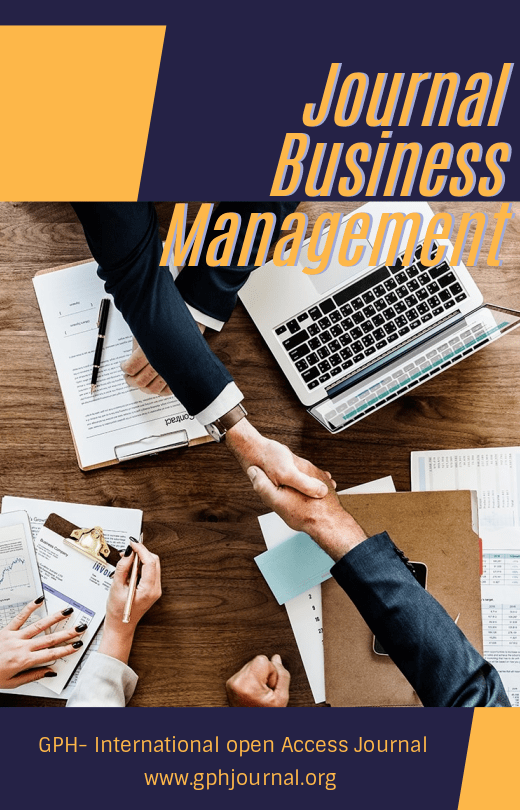Mergers and Acquisition: Conceptualisation, Motives, and Implications for Human Resource Management
Abstract
Mergers and acquisitions have consistently remained stable as a management fad that has transcended several decades. This paper is desk research designed to explore extant literature to gain an insight into the meaning, motives, and human resource implications of the twin concepts that have often been used interchangeably. The outcome of the review revealed that even though the concepts of mergers and acquisition have been interchangeably used in the extant literature, there is a sharp difference between them. In addition, it was observed that the human resource function has often been relegated in cases of business takeovers globally. And the relegation may have been responsible for the several cases of takeover failures. It is recommended that top-level management should be proactive in developing an all-inclusive plan from conception to the actual decision on any business takeover since the outcome of the process is a function of what managers and employees make out of the whole process. In addition, it is also recommended that the dynamics of the takeover-human resource should be rescued from the domain of theorizing by instituting hardcore empirical consideration of the human resource implications of mergers and acquisitions.
Downloads
References
Anders, G. (2020). The new-normal of mergers and acquisition.INTHEBLACK. December Edition.
Andrews, M.C., & Kacmar, M.K (2010). Discriminating among organisational politics, justice, and support. Journal of Organisational Behaviour, 22:343.
Babalola, Z. (2020). Diamond and Access bank merger-Changing financial landscape in Nigeria. Tnp.com.ng/insight//diamond-and-access-bank-merger-changing-financial-leverage-in-nigeria.
Brealey, R.A., & Meyer, S.C. (1996). Principles of Corporate Finance 5th ed. New York: McGraw-Hill Companies, Inc.
Burcata, G., & Rizescu, M. (2017). The role of communication in enhancing work effectiveness of an organisation. Land Forces Academy Review, 22(1): 1-57.
Cartwright, S., & Cooper, C. (1990). The impact of mergers and acquisitions on people at work: Existing research and issues. British Journal of Management, 1:65-76.
Companies and Allied Matters Act (2004). Abuja: Federal Government Printers.
Firth, M. (1980). Takeovers, shareholders return, and the theory of the firm. Quarterly Journal of Economics, (March): 235-260.
Global Transaction Forecast (2019).The federal competition and consumer protection act 2019: Regulatory implications for merger transactions in Nigeria. https://andersentax.ng/the-federal-competition-and-consumer-protection-act-2019-regulatory-implications-for-merger-transactions-in-nigeria/
Gotsis, N.G., & Kortezi, Z. (2010). Ethical consideration in organisational politics: Expanding the perspective. Journal of Business Ethics, 93: 497-517.
Hampton, J.J. (1989). Financial Decision Making: Concepts, Problems and Cases, 4th edition. New Jersey: Prentice-Hall.
Hunt, J.W. (1987). Hidden extras: How people get overlooked in takeovers. Personnel Management, 19(July):24.
Investment and Securities Act (2007). Abuja: Federal Government Printers.
Isik, M., Timuroglu, K., & Aliyev, Y. (2015). The relationship between teamwork and organisational trust: Relation between cognitive, affective, and action loyalty. International Journal of Research in Business and Social sciences (2147-4478), 4(1): 113-132
Jensen, M.C. (1986). Agency costs of free cash flow, corporate finance, and takeovers. American Economic Review, 76:323-329.
Jensen, M.C. (1992). The takeover controversy: Analysis and evidence, in Stern, J.M., & Chew, D.H (eds). The Revolution in Corporate Finance. Cambridge. Massachusetts: Blackwell Publishers.
Jensen, M.C., & Meckling, W.H. (1976). Theory of the firm: Managerial behaviour, agency costs, and ownership structure. Journal of Financial Economics, 3(4): 305-360.
Kokemuller, N. (2019). How does poor communication affect an organisation? Management. https://bizfluent.com/list-6640408-disadvantages-team-communication.html
Kumar, B.R., & Rajib, P. (2007). An analytical study on multiple mergers in India. Management Review, 9(1): 1-31.
Leepsa, N.M., & Mishra, C.S. (2016). Theory and practice of mergers and acquisition: Empirical evidence from Indian cases. IIMS Journal of Management Sciences, 7(2):179-194
Manea, L., & Ali, S.S.M. (2017). Mergers and their human side: Key factors for an effective acquisition and for surviving one. Conference Proceedings.
Martin, K.J., & McConnell, J.J. (1991). Corporate performance, corporate takeovers, and management turnover. Journal of Finance, 46:671-687.
McShane, S., & Von Glinow, M. (2005). Organisational Behaviour 3rd Edition. New York: McGraw-Hill.
Meyer, J.P., & Allen, N.J. (1997). Commitment in the Workplace: Theory, Research, and Application. Thousand Oaks, California: Sage.
Mueller, D.C. (1969). A theory of conglomerate mergers. The Quarterly Journal of Economics, MIT Press, 83(4):1229-1257.
Osaze, B.E., & Anao, A.R. (1990). Managerial Finance. University of Benin, Benin City: Uniben Press.
Perchstone & Graeys Solicitors Advocate Arbitrators. (2015). Employment issues in mergers & acquisition. Mergers & Acquisition, 2(2): 1-2.
Pritchett, P. (1985). After the Merger: Managing the Shockwaves. United State of America: Dow Jones-IRWIN.
Proshare (2005). Elumelu is the MD of UBA-Merger of UBA/STB. Proshareng.com/news.
Rolls, R. (1986). The hubris hypothesis of corporate takeovers. The Journal Business, 59(2), 197-216.
Roberts, A., Wallace, W., & Moles, P. (2016). Mergers and Acquisition. Edinburgh Business School Heriot-Watt University Course Module.
Rumelt, R.P. (1987). Evaluation of Strategy: Theory and Models in Strategic Management: A new view of Business, Policy, and Planning, edited by Schendel, D., & Hofer, C. Boston: Little Brown and Co.
Scott, J.T. (1982). Multi-market contact and economic performance. The Review of Economics and Statistics, 64(3): 368-375.
Singh, A. (1971). Take-overs: Their Relevance to the Stock Market and the Theory of the Firm. Cambridge: Cambridge University Press.
Shippee, S.W. (2014). The X-factors in successful acquisitions: Getting the human side right. MWorld, 13(2014): 14-16.
Varaiya, N. (1985). A test of Roll’ Hubris Hypothesis of corporate takeovers. Working paper, Dallars, Texas: Southern Methodist University, School of Business.
Vijaywargia, T. (2016). Analysing the consequences of mergers and acquisition on human resources. Global Journal of Business and Management Perspective, 5(1): 32-34.
Copyright (c) 2021 GPH - International Journal of Business Management (IJBM)

This work is licensed under a Creative Commons Attribution-NonCommercial-NoDerivatives 4.0 International License.
Author(s) and co-author(s) jointly and severally represent and warrant that the Article is original with the author(s) and does not infringe any copyright or violate any other right of any third parties and that the Article has not been published elsewhere. Author(s) agree to the terms that the GPH Journal will have the full right to remove the published article on any misconduct found in the published article.




























